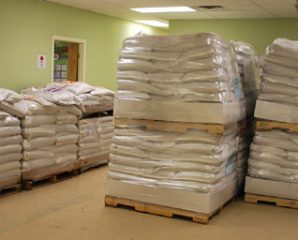Many people look at a grass seed label and unfortunately do not clearly understand what it is they are getting even though that is its intended purpose. I would like to focus on what is probably one of the most misunderstood portions of the label – the ‘Percent Pure Seed’.
Let’s say that a seed label lists the following contents:
Pure seed (% by weight) Germination
33% Kentucky Bluegrass 85%
33% Perennial Ryegrass 85%
33% Creeping Red Fescue 85%
At first it would look as though the bag of seed contains equal amounts of seed, and it does – by weight, but not by actual seed count. Consider the following typical number of seeds per pound for each seed:
Kentucky Bluegrass 2,200,000 seeds per pound
Perennial Ryegrass 230,000 seeds per pound
Creeping Red Fescue 600,000 seeds per pound
All of a sudden one can see that there is far more Kentucky Bluegrass seed in this bag than the Perennial Rye and the Creeping Red Fescue combined. In fact the percentages by actual seed COUNT works out like this:
Kentucky Bluegrass 73%
Perennial Ryegrass 7%
Creeping Red Fescue 20%
Another problem I often encounter is people being too liberal with the amounts of seed being used. To understand why this is a problem, lets look at some characteristics of Kentucky Bluegrass (KB) and Perennial Rye (PR).
First, the actual seed of KB, as seen above, is about 1/3rd the size of PR seed and therefore has far less energy stored for initial growth, so it grows very slow at first (and that’s after the 21 days it takes to germinate. Remember KB takes 1 whole year to exhibit full mature characteristics. It will probably take 8 to 10 weeks before the first mowing. Once mature, it has thick fleshy underground rhizomes and above-ground stolons that store energy to recover from things like drought, heavy traffic and insect damage.
On the other hand, PR germinates in as little as 4 days and continues to grow fast. You could be mowing it in as little as four weeks. However, PR does not develop the the thick energy storing and spreading rhizomes and stolons that KB does and thus does not spread and fill in like KB.
The danger of putting down heavy or excessive rates of a seed mix is that you can increase the PR numbers to a point where it will rapidly germinate well before the KB does, crowding it out long before it ever has a chance to become established.
It is worth reiterating that under good growing conditions MATURE Kentucky Bluegrass will out-compete Perennial Rye grass on any given day but not before it is mature.
– Mark

